By Mian Ishaq. > Mon Jan 6 2025
Entropy: A Measure of Our Own Ignorance and Limits of Our Knowledge
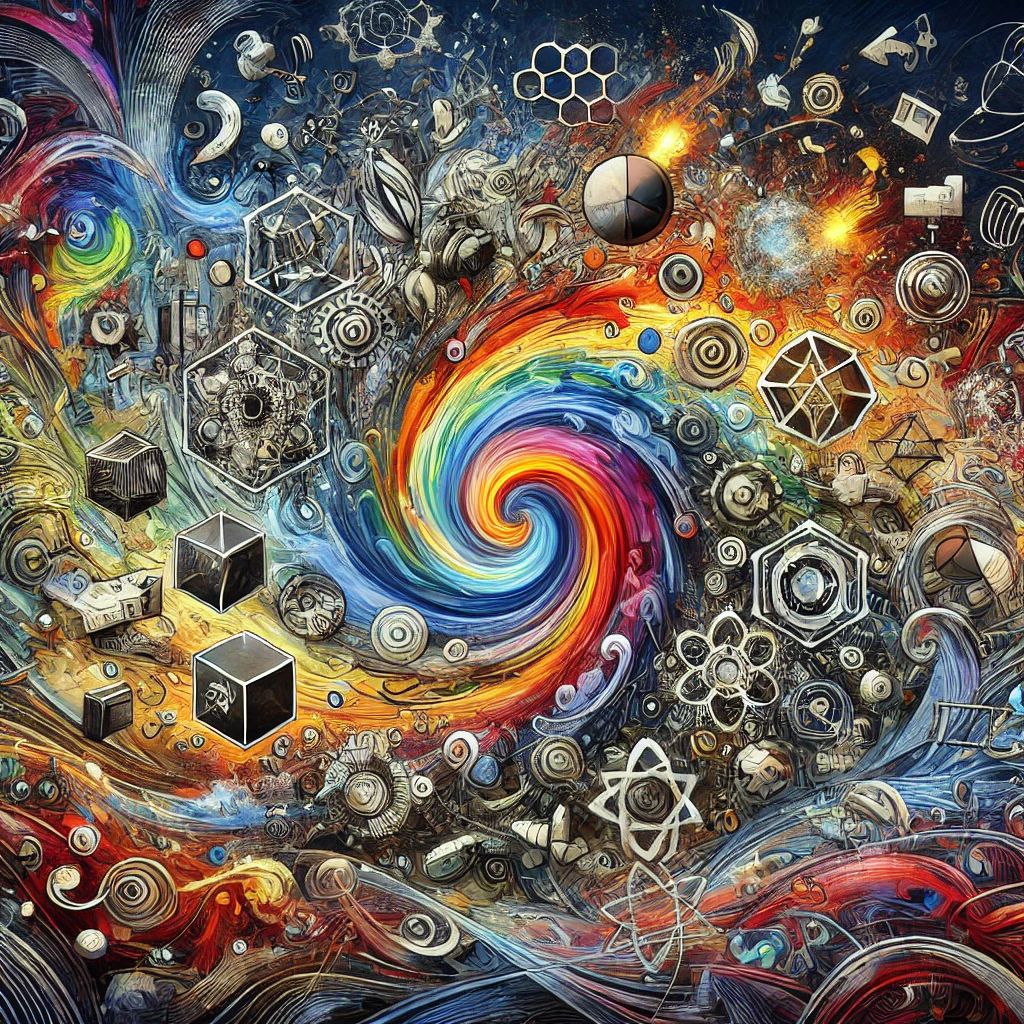
Representing the key concepts of entropy: thermodynamics, information theory, the limits of knowledge, human perception, and entropy as a creative force.
Introduction
Entropy is a concept that permeates various disciplines, from physics and information theory to philosophy and cognitive science. Traditionally associated with disorder and the second law of thermodynamics, entropy quantifies the amount of uncertainty or randomness within a system. However, beyond its technical definitions, entropy serves as a profound metaphor for human ignorance and the inherent limits of our knowledge. This essay explores entropy not merely as a physical quantity but as a reflection of our cognitive boundaries, examining how it encapsulates the extent of what we do not know and the challenges in expanding our understanding of the universe.
Understanding Entropy: Beyond Thermodynamics
To appreciate entropy as a measure of ignorance, it is essential first to grasp its foundational meanings across different contexts.
- Thermodynamic Entropy: In thermodynamics, entropy is a measure of the number of specific ways a system can be arranged, often interpreted as the degree of disorder. The second law of thermodynamics states that in a closed system, entropy tends to increase over time, leading to a state of maximum disorder or thermodynamic equilibrium. This principle underscores the inevitable progression towards chaos and the limits it imposes on energy transformations.
- Information Theory Entropy: Introduced by Claude Shannon, entropy in information theory quantifies the uncertainty or unpredictability of information content. It measures the average amount of information produced by a stochastic source of data, serving as a fundamental concept in data compression, cryptography, and communication systems.
- Philosophical and Cognitive Entropy: Beyond its scientific applications, entropy metaphorically represents the limits of human knowledge and the inherent uncertainties in our understanding of the world. It symbolizes the vastness of the unknown and the challenges in reducing uncertainty through learning and discovery.

Entropy as a Reflection of Human Ignorance
Entropy, in its broadest sense, can be viewed as a measure of our ignorance. This perspective stems from the recognition that entropy quantifies uncertainty, and uncertainty is intrinsically linked to what we do not know.
- Epistemological Implications: Epistemology, the study of knowledge, grapples with questions about what we can know and the limits of that knowledge. Entropy encapsulates these epistemological boundaries by providing a quantitative measure of uncertainty. High entropy implies a greater degree of ignorance, highlighting areas where our understanding is limited or incomplete.
- Scientific Uncertainty: In scientific inquiry, entropy often represents the unknown variables and complexities that challenge our theories and models. For instance, in statistical mechanics, high entropy states correspond to numerous possible microstates, reflecting our limited ability to predict specific outcomes. Similarly, in information theory, high entropy signals high unpredictability in data, indicating areas where our information is insufficient.
- Cognitive Limitations: Human cognition is bounded by the capacity to process information and make sense of complex systems. Entropy, as a measure of disorder, mirrors the cognitive load required to manage uncertainty. As entropy increases, so does the difficulty in organizing and understanding information, underscoring the limitations of human intellect in comprehending intricate phenomena.
Entropy and the Limits of Knowledge
Exploring entropy as a measure of ignorance naturally leads to an examination of the limits of our knowledge. Entropy highlights not only what we do not know but also the fundamental constraints that prevent us from knowing everything.
- Thermodynamic Boundaries: The second law of thermodynamics sets a fundamental limit on the efficiency of energy conversion processes. It dictates that no process can be 100% efficient, as some energy is always dispersed as waste heat, increasing the system’s entropy. This principle imposes a boundary on our ability to harness energy, reflecting a physical limit to technological advancement.
- Quantum Uncertainty: In quantum mechanics, the Heisenberg Uncertainty Principle states that certain pairs of physical properties, like position and momentum, cannot be simultaneously measured with arbitrary precision. This intrinsic uncertainty introduces a fundamental limit to our knowledge of the quantum world, embodying entropy at the most fundamental level of reality.
- Complex Systems and Predictability: In complex systems, such as weather patterns, ecosystems, or economies, entropy represents the unpredictability arising from numerous interacting components. The high entropy in these systems indicates that small changes can lead to vastly different outcomes, making precise prediction and control exceedingly difficult. This inherent unpredictability sets practical limits on our ability to manage and understand complex phenomena.
Entropy in Information and Communication
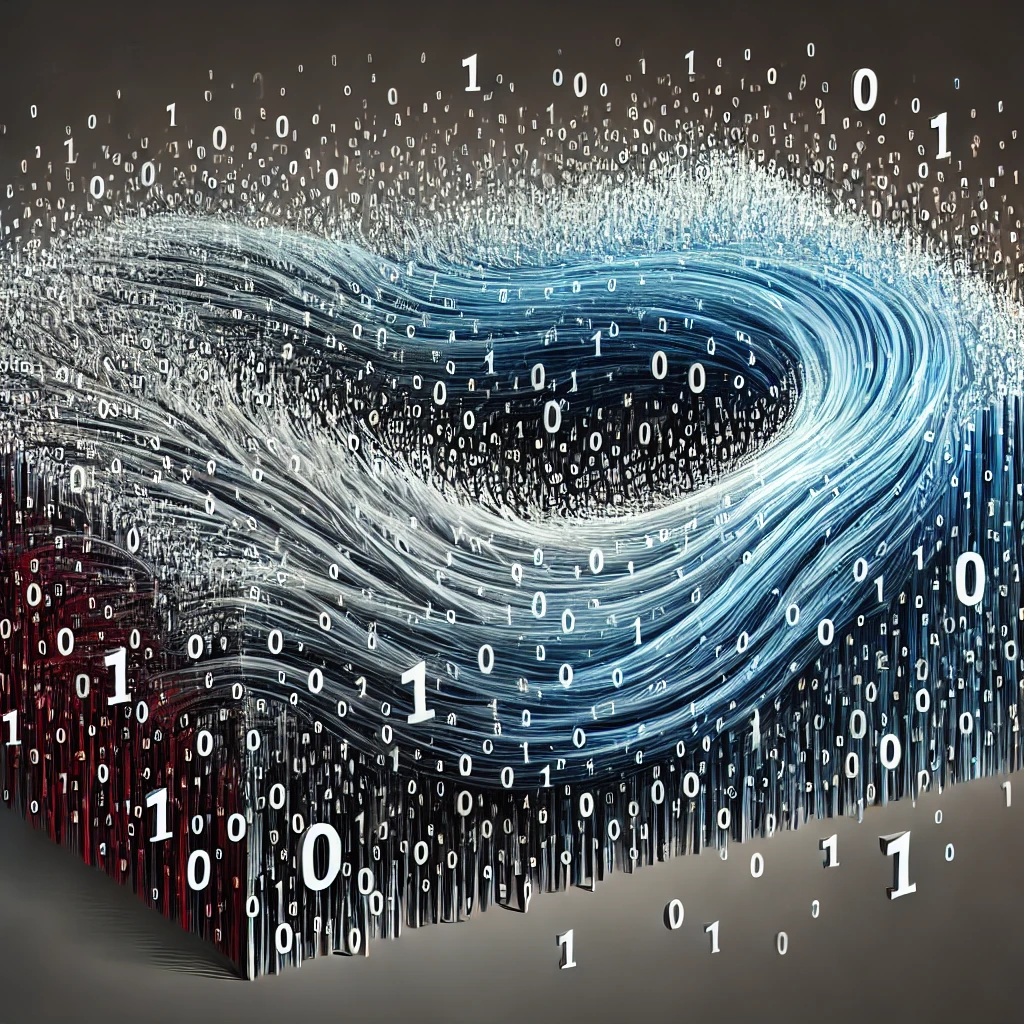
Information theory provides a concrete framework for understanding entropy as a measure of uncertainty in data and communication systems, further illustrating its role as a metric for human ignorance.
- Data Compression: Entropy dictates the theoretical limits of data compression. High entropy data, characterized by high unpredictability, cannot be compressed significantly without loss, reflecting our ignorance of underlying patterns or redundancies. Conversely, low entropy data can be compressed more effectively, indicating our better understanding and ability to predict the information content.
- Cryptography: In cryptography, entropy is crucial for security. High entropy keys are essential for secure encryption, as they are more resistant to brute-force attacks due to their unpredictability. This reliance on high entropy underscores the importance of uncertainty in safeguarding information, aligning with the concept of entropy as a barrier against our knowledge.
- Machine Learning and AI: In the realm of artificial intelligence, entropy measures are used to evaluate the uncertainty in model predictions. High entropy in predictions signifies low confidence and greater uncertainty, highlighting areas where models lack sufficient knowledge or data. This application underscores entropy’s role in identifying the boundaries of machine understanding and the need for further information to reduce uncertainty.
Entropy and the Philosophy of Knowledge
The philosophical implications of entropy extend to our understanding of existence, reality, and the pursuit of knowledge. Entropy serves as a metaphor for the unknown and the eternal quest to push the boundaries of what we can comprehend.
- Existential Uncertainty: Entropy embodies the fundamental uncertainties of existence. From the origin of the universe to the nature of consciousness, entropy reflects the vastness of the unknown. This existential uncertainty drives philosophical inquiry and the human desire to seek meaning and understanding amidst chaos.
- The Pursuit of Order: Human endeavors to impose order on chaos—through science, art, and technology—can be seen as attempts to reduce entropy. However, entropy suggests that this quest is inherently limited, as the universe trends towards increasing disorder. This tension between order and disorder underscores the philosophical challenge of finding balance and meaning in an entropic world.
- Knowledge as a Finite Resource: Entropy highlights the finite nature of human knowledge. As we uncover new information and reduce uncertainty in some areas, other areas become more uncertain. This dynamic reflects the ever-expanding frontiers of knowledge and the perpetual state of partial ignorance that defines the human condition.
Entropy in Biological Systems
Biology offers compelling examples of entropy as a measure of ignorance and the limits of knowledge, particularly in the context of life’s complexity and adaptability.
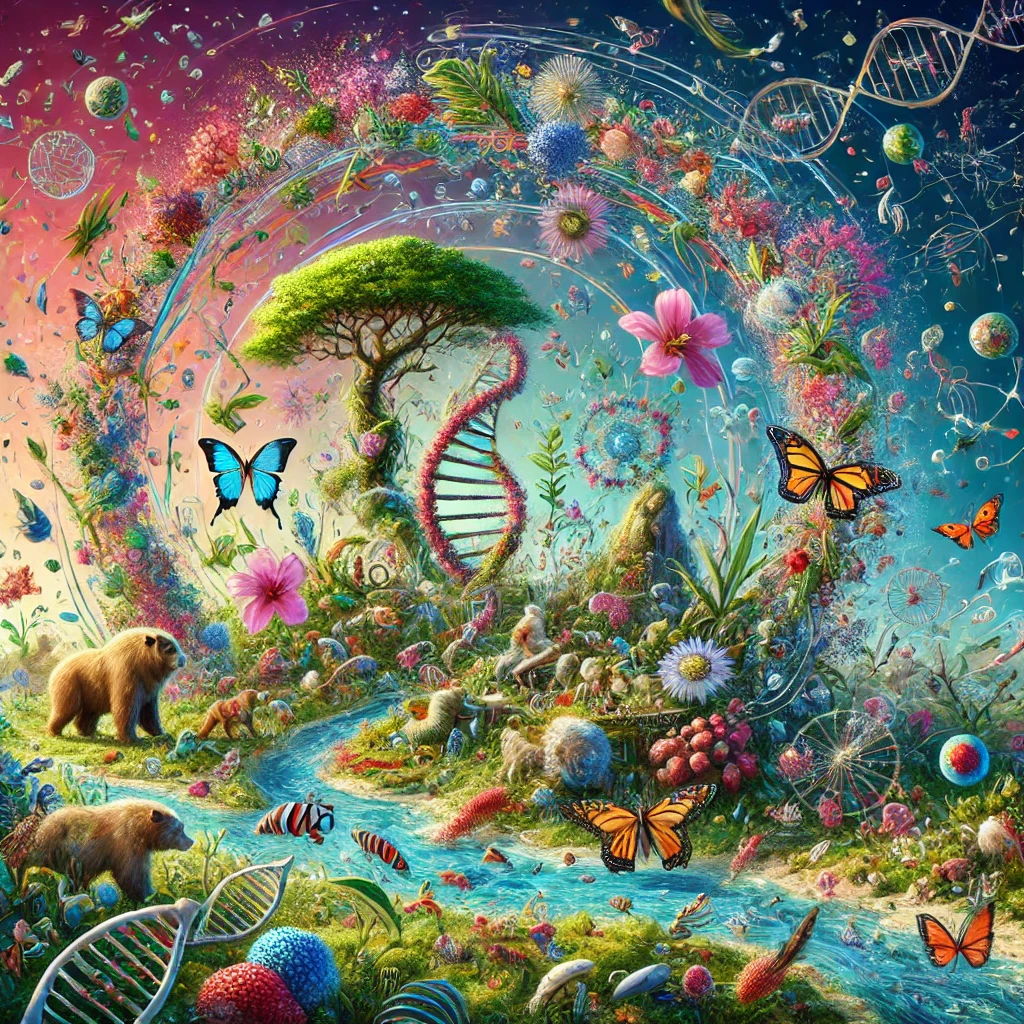
- Homeostasis and Order: Living organisms maintain order through homeostasis, a process that counteracts entropy by regulating internal conditions. This maintenance requires constant energy input, highlighting the delicate balance between order and disorder. The complexity of these regulatory mechanisms reflects our limited understanding of biological systems and the intricate interplay of factors that sustain life.
- Evolutionary Processes: Evolutionary biology illustrates entropy’s role in shaping life. Genetic variation introduces randomness, while natural selection acts on this variability to produce adaptive traits. This interplay between randomness (high entropy) and order (low entropy) embodies the limits of predictability in evolutionary outcomes, emphasizing the role of entropy in biological diversity and complexity.
- Neuroscience and Consciousness: The human brain, with its vast network of neurons and synapses, exemplifies a system where entropy measures the uncertainty in understanding consciousness and cognitive processes. Despite advances in neuroscience, the precise mechanisms underlying consciousness remain elusive, reflecting the high entropy associated with this profound aspect of existence.
Entropy and Technological Advancement
Technological progress often aims to reduce uncertainty and manage complexity, aligning with entropy’s role as a measure of ignorance. However, entropy also imposes limits on what can be achieved through technology.
- Engineering and Design: In engineering, entropy informs the design of systems to maximize efficiency and minimize energy loss. Understanding entropy allows engineers to predict and mitigate sources of disorder, enhancing the reliability and performance of technological solutions. Nevertheless, entropy sets fundamental limits on the efficiency and scalability of these systems.
- Artificial Intelligence and Data Science: AI and data science leverage entropy to model and predict complex patterns. Entropy measures help in feature selection, model evaluation, and understanding uncertainty in predictions. However, high entropy in data can indicate areas where models lack sufficient information, highlighting the ongoing challenge of reducing uncertainty in machine learning.
- Sustainable Technologies: Addressing environmental challenges requires technologies that manage entropy effectively, such as renewable energy systems that harness low-entropy energy sources. Sustainable technologies aim to balance energy inputs and outputs, mitigating entropy’s impact on ecosystems and resources. This pursuit underscores the interplay between technological innovation and the limits imposed by entropy.
Entropy and Cosmology
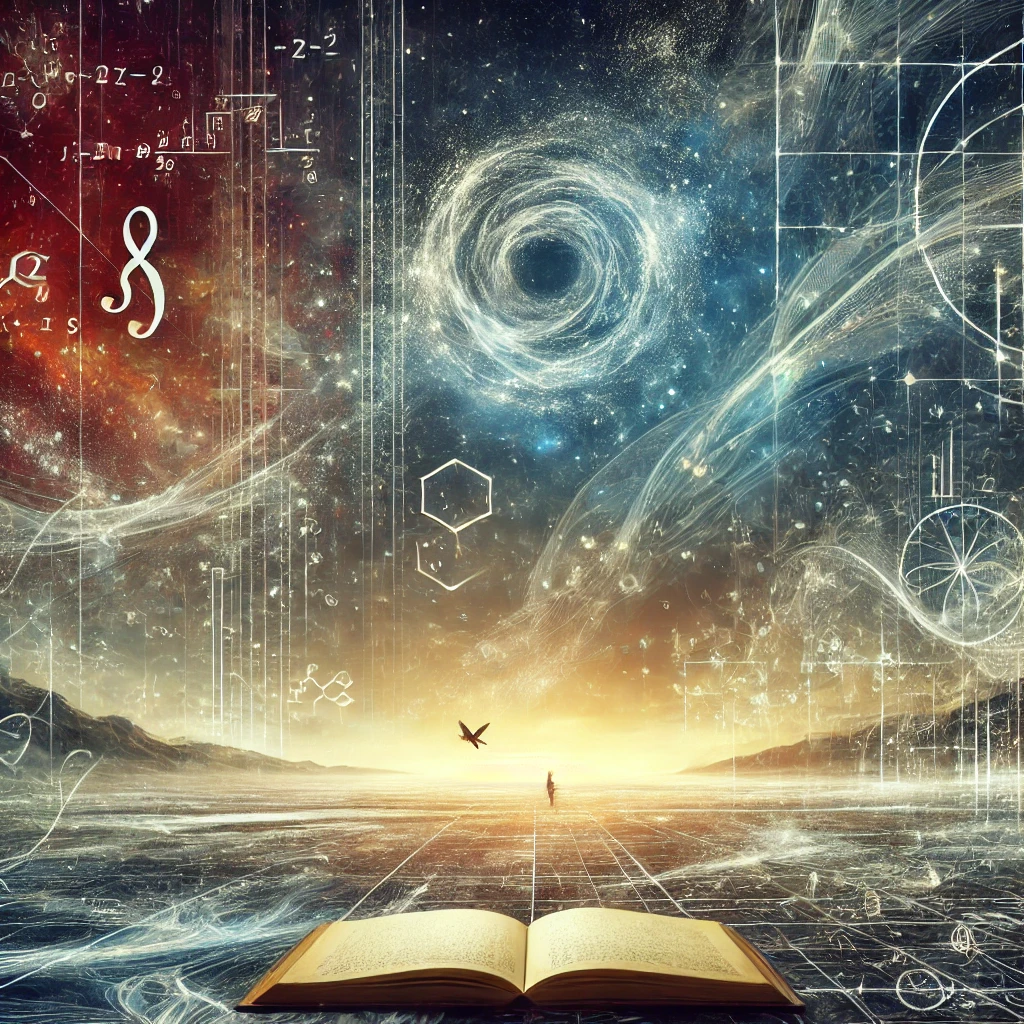
Cosmology provides a grand scale on which entropy illustrates the limits of our knowledge and the fate of the universe.
- The Arrow of Time: Entropy defines the arrow of time, marking the direction in which time flows—from past to future—through the increase of disorder. This unidirectional flow sets a temporal boundary on our understanding of the universe, emphasizing the limits of predictability and the irreversible nature of certain processes.
- The Heat Death of the Universe: The concept of the universe’s heat death, where entropy reaches its maximum and all processes cease, encapsulates the ultimate limit of cosmic knowledge. This theoretical end state reflects the inexorable increase of entropy, posing profound questions about the universe’s origin, structure, and eventual fate.
- Black Holes and Information Paradox: Black holes, regions of spacetime with gravitational pull so intense that nothing can escape, challenge our understanding of entropy and information. The black hole information paradox—whether information that falls into a black hole is lost—highlights the limits of our knowledge in reconciling quantum mechanics with general relativity, and underscores entropy’s role in these fundamental mysteries.
Entropy and Human Cognition
Human cognition, the process by which we acquire knowledge and understand the world, is intimately connected with entropy as a measure of ignorance.
- Learning and Adaptation: Learning involves reducing uncertainty by acquiring new information and forming patterns. Entropy measures the remaining uncertainty after learning, reflecting the limits of what can be known based on available data and cognitive capacity.
- Memory and Information Processing: The brain processes and stores information in ways that manage entropy. Efficient memory systems aim to minimize redundancy and optimize information retrieval, balancing the trade-off between storage capacity and cognitive efficiency.
- Decision-Making Under Uncertainty: Human decision-making often occurs under conditions of uncertainty, where entropy quantifies the unpredictability of outcomes. Understanding entropy in this context helps elucidate the cognitive strategies employed to manage risk and make informed choices despite inherent ignorance.
Entropy in Social and Economic Systems
Entropy’s metaphorical application extends to social and economic systems, where it represents the uncertainty and complexity inherent in human interactions and institutions.
- Economic Markets: Financial markets exhibit high entropy due to the multitude of interacting agents and the unpredictability of market forces. Entropy measures the uncertainty in market trends, reflecting the limits of economic forecasting and the inherent risks in investment strategies.
- Social Dynamics: Social systems, characterized by diverse interactions and cultural complexities, display high entropy. Understanding entropy in social dynamics highlights the challenges in predicting social movements, behavior patterns, and the evolution of societal norms.
- Organizational Behavior: In organizational contexts, entropy represents the uncertainty in managing human resources, workflows, and strategic planning. High entropy in organizational processes signifies complexity and unpredictability, underscoring the limits of managerial control and the need for adaptive strategies.
Reducing Entropy: The Quest for Knowledge

While entropy signifies the limits of our knowledge, the pursuit of understanding aims to reduce entropy by uncovering patterns, establishing theories, and enhancing predictability.
- Scientific Method: The scientific method systematically reduces entropy by formulating hypotheses, conducting experiments, and refining theories. Each scientific discovery diminishes uncertainty in specific domains, expanding the boundaries of human knowledge.
- Technological Innovation: Technological advancements reduce entropy by creating tools and systems that enhance information processing, data analysis, and predictive modeling. Innovations in computing, for instance, enable the management of vast amounts of data, thereby reducing uncertainty in complex analyses.
- Education and Communication: Education and effective communication facilitate the transmission of knowledge, reducing entropy by sharing information and insights. Collaborative efforts in research and interdisciplinary studies further contribute to the collective reduction of ignorance.
The Persistent Frontier of Entropy
Despite ongoing efforts to reduce entropy, the frontier of human knowledge remains perpetually expansive, with new uncertainties emerging as old ones are resolved.
- Emergent Phenomena: As we delve deeper into understanding specific phenomena, new layers of complexity and uncertainty often arise. Emergent properties in complex systems reveal that reducing entropy in one aspect may introduce new dimensions of unpredictability.
- Interdisciplinary Challenges: Bridging disparate fields of knowledge can uncover unforeseen connections and uncertainties, demonstrating that entropy is not merely a static measure but a dynamic aspect of intellectual exploration.
- Philosophical Reflections: The acknowledgment of entropy as a measure of ignorance fosters a philosophical humility, recognizing that the pursuit of knowledge is an ongoing journey with no absolute end. This perspective encourages a balance between confidence in our understanding and openness to new discoveries.
Entropy and the Human Condition
Entropy’s role as a measure of ignorance extends to the broader human condition, influencing how we perceive our place in the universe and our quest for meaning.
- Existential Meaning: The recognition of our ignorance, as quantified by entropy, drives the human search for meaning and purpose. It compels us to seek understanding and significance in a universe characterized by inherent uncertainty and disorder.
- Resilience and Adaptability: Understanding entropy’s implications fosters resilience and adaptability, as we navigate a world where unpredictability is a constant. Embracing entropy as a measure of ignorance encourages flexibility and innovation in the face of challenges.
- Ethical and Moral Considerations: Acknowledging the limits of our knowledge influences ethical and moral decision-making, promoting humility and caution in our actions. It underscores the importance of considering the unknown consequences of our choices and the need for responsible stewardship of knowledge and resources.
Conclusion
Entropy, far beyond its technical definitions in thermodynamics and information theory, serves as a profound measure of human ignorance and the limits of our knowledge. It encapsulates the uncertainty and unpredictability inherent in the universe, reflecting the boundaries of what we can understand and predict. As a metaphor, entropy highlights the vastness of the unknown and the perpetual challenge of reducing ignorance through learning, discovery, and innovation.
In recognizing entropy as a measure of our own ignorance, we gain a deeper appreciation for the complexities of existence and the ongoing quest to expand the horizons of human understanding. Entropy reminds us of our cognitive limitations and the delicate balance between order and disorder, encouraging a philosophical humility and a persistent drive to explore the unknown. Ultimately, entropy serves as both a barrier and a catalyst, shaping our pursuit of knowledge and our place within the intricate tapestry of the cosmos.
Entropy’s Role as a Measure of Ignorance in the Broader Human Condition
Entropy, traditionally a concept rooted in physics and information theory, transcends its scientific origins to become a profound metaphor for human ignorance and the inherent limitations of our knowledge. This extension of entropy offers a lens through which we can examine various facets of the human condition, including cognition, societal structures, technological advancements, and our existential understanding of the universe. This detailed exploration delves into how entropy, as a measure of ignorance, permeates the broader human experience, shaping our perceptions, behaviors, and aspirations.
1. Entropy and Human Cognition
a. Cognitive Load and Information Processing
Human cognition is inherently limited by our capacity to process and retain information. Entropy, in this context, quantifies the uncertainty and complexity we face when dealing with vast amounts of data or intricate problems. High entropy scenarios, where information is disordered or unpredictable, increase cognitive load, making it more challenging to form coherent understanding or make informed decisions.
Example: When confronted with a complex dataset without clear patterns, individuals may struggle to extract meaningful insights, reflecting high informational entropy and limited cognitive capacity to reduce uncertainty.
b. Learning and Knowledge Acquisition
Learning is fundamentally about reducing entropy by organizing information into understandable structures. However, the process is constrained by the existing knowledge base and the ability to integrate new information effectively. The higher the entropy of the new information—meaning its complexity or deviation from existing knowledge—the more significant the challenge in assimilating it.
Example: Learning advanced topics in quantum mechanics involves grappling with highly abstract and non-intuitive concepts, representing high entropy that requires substantial cognitive effort to comprehend.
c. Memory and Recall
Memory systems strive to reduce entropy by storing information in an organized manner. However, over time, memories can become fragmented or distorted, increasing informational entropy and making accurate recall difficult. This degradation highlights the limits of our ability to maintain and retrieve knowledge flawlessly.
Example: Recalling specific details from a childhood event often leads to incomplete or altered memories, illustrating increased entropy in the stored information over time.
2. Entropy in Social and Cultural Systems

a. Social Dynamics and Uncertainty
Social systems are characterized by complex interactions among individuals and groups, leading to high levels of uncertainty and unpredictability. Entropy, in this context, measures the variability and lack of order within social structures, influencing everything from interpersonal relationships to institutional stability.
Example: Political landscapes are often volatile, with shifting alliances and unpredictable policy changes reflecting high social entropy that complicates governance and societal cohesion.
b. Cultural Evolution and Entropic Forces
Culture evolves through the interplay of order and disorder. Entropic forces introduce variations and innovations, while cultural norms and institutions strive to maintain coherence and stability. The balance between these forces shapes the trajectory of cultural development.
Example: The emergence of new art movements often disrupts established conventions, introducing creative entropy that both challenges and enriches cultural expression.
c. Organizational Behavior and Management
In organizations, entropy manifests as uncertainty in workflows, decision-making processes, and human interactions. Effective management seeks to reduce entropy by implementing structures, protocols, and communication channels that enhance predictability and efficiency.
Example: Implementing standardized procedures in a company reduces operational entropy, leading to smoother processes and clearer expectations for employees.
3. Entropy in Scientific and Technological Advancement
a. Scientific Discovery and Knowledge Gaps
Scientific progress involves identifying and bridging gaps in knowledge, effectively reducing entropy in our understanding of the natural world. However, inherent uncertainties and the vastness of the unknown ensure that entropy remains a persistent challenge in scientific inquiry.
Example: The search for a unified theory in physics aims to reduce the entropy of our understanding by unifying quantum mechanics and general relativity, yet the complexity of both fields maintains significant knowledge gaps.
b. Technological Innovation and Complexity
Technological advancements strive to manage and reduce entropy by creating systems that enhance order, efficiency, and predictability. Nonetheless, as technology becomes more sophisticated, it often introduces new layers of complexity and uncertainty.
Example: The development of artificial intelligence systems reduces informational entropy in specific tasks through automation and pattern recognition, yet raises new ethical and operational uncertainties that must be navigated.
c. Information Technology and Data Management
In the digital age, managing data entropy is crucial. Efficient data organization, storage, and retrieval systems aim to minimize uncertainty and enhance accessibility, supporting informed decision-making and knowledge dissemination.
Example: Database management systems employ indexing and categorization to reduce data entropy, enabling faster and more accurate information retrieval for users.
4. Entropy and Existential Understanding
a. The Quest for Meaning in an Entropic Universe
Human beings seek meaning and purpose in a universe that, on a grand scale, trends toward increasing entropy. This existential pursuit reflects the tension between our desire for order and the inherent disorder of existence.
Example: Philosophical and religious frameworks often provide narratives that impose order and meaning on the chaotic aspects of life, helping individuals cope with the existential uncertainties represented by entropy.
b. Coping with Mortality and Entropic Decay
Entropy metaphorically represents the inevitability of decay and mortality. Acknowledging this aspect of entropy influences how individuals perceive life, legacy, and the transient nature of existence.
Example: Artistic expressions such as literature and visual arts frequently grapple with themes of impermanence and decay, mirroring the entropic decay inherent in the human condition.
c. Resilience and Adaptation
Human resilience is a response to entropic challenges, embodying the capacity to adapt and find stability amidst disorder. This adaptability reflects our ability to manage and mitigate the effects of entropy in our lives.
Example: Communities recovering from natural disasters demonstrate resilience by reorganizing and rebuilding, effectively managing entropic disruptions to restore order and functionality.
5. Entropy in Economic Systems
a. Market Volatility and Financial Uncertainty
Economic systems are inherently entropic, characterized by fluctuating markets, unpredictable consumer behavior, and shifting economic indicators. Entropy measures the uncertainty and variability within these systems, influencing investment strategies and policy-making.
Example: Stock market fluctuations reflect high economic entropy, making precise predictions challenging and necessitating strategies that account for uncertainty and risk.
b. Resource Allocation and Efficiency
Managing economic entropy involves optimizing resource allocation to minimize waste and enhance efficiency. This process requires balancing competing demands and navigating uncertainties in supply and demand.
Example: Efficient supply chain management reduces entropy by ensuring timely and accurate delivery of goods, thereby enhancing overall economic stability and performance.
c. Innovation and Economic Growth
Economic growth often hinges on innovation, which introduces creative entropy by disrupting established industries and creating new markets. Balancing innovation with stability is crucial for sustained economic development.
Example: The rise of renewable energy technologies introduces creative entropy into the traditional energy sector, driving economic growth while challenging existing fossil fuel-based infrastructures.
6. Entropy in Psychological and Emotional Well-being
a. Mental Health and Cognitive Entropy
High levels of uncertainty and unpredictability in personal lives contribute to cognitive entropy, impacting mental health and emotional well-being. Managing this entropy is essential for maintaining psychological stability.
Example: Chronic stress arises from managing unpredictable life events, reflecting high psychological entropy that can lead to anxiety and burnout if not addressed.
b. Decision-Making and Uncertainty
Human decision-making often occurs under conditions of uncertainty, where entropy quantifies the unpredictability of outcomes. Effective decision-making strategies involve managing and reducing this uncertainty to make informed choices.
Example: Individuals use heuristics and risk assessment tools to navigate uncertain decisions, attempting to reduce the entropy associated with potential outcomes.
c. Creativity and Emotional Expression
Creative processes thrive on managing entropy by transforming disorder into novel and meaningful expressions. Emotional expression often involves channeling entropic experiences into artistic or personal narratives.
Example: Writing poetry or creating art allows individuals to process and organize chaotic emotions, effectively reducing emotional entropy through creative expression.
7. Entropy in Educational Systems

a. Curriculum Design and Knowledge Structuring
Educational systems aim to reduce entropy by structuring knowledge into coherent curricula that facilitate learning and comprehension. Effective education minimizes informational uncertainty, enhancing students’ ability to grasp complex concepts.
Example: Progressive educational frameworks build foundational knowledge before introducing advanced topics, systematically reducing entropy and supporting cumulative learning.
b. Assessment and Feedback Mechanisms
Assessments and feedback in education serve to identify and address areas of high entropy in student understanding, guiding targeted interventions to enhance learning outcomes.
Example: Diagnostic tests identify specific knowledge gaps, allowing educators to tailor instruction and reduce informational entropy for individual students.
c. Lifelong Learning and Adaptability
In a rapidly changing world, lifelong learning becomes essential for managing entropic challenges. Continuous education helps individuals adapt to new information and evolving societal demands, reducing uncertainty in their professional and personal lives.
Example: Professional development courses enable individuals to acquire new skills and knowledge, mitigating the entropy associated with technological advancements and changing job markets.
8. Entropy and Ethical Decision-Making
a. Moral Uncertainty and Ethical Complexity
Ethical decision-making often involves navigating complex and uncertain moral landscapes, where entropy measures the ambiguity and variability of ethical dilemmas.
Example: Bioethical decisions, such as those surrounding genetic engineering, involve high moral entropy due to the unpredictable implications and diverse perspectives involved.
b. Balancing Order and Flexibility
Ethical frameworks strive to balance structured moral principles with the flexibility to address unique and evolving situations, managing the entropy inherent in diverse ethical scenarios.
Example: Utilitarianism provides a structured approach to ethics by focusing on outcomes, yet must adapt to the unpredictable nuances of specific cases, balancing order with flexibility.
c. Ethical Innovation and Entropic Challenges
Advancements in technology and society introduce new ethical challenges, increasing moral entropy and requiring innovative ethical solutions to address unprecedented scenarios.
Example: The rise of artificial intelligence poses ethical questions about autonomy, accountability, and the nature of consciousness, reflecting high ethical entropy that necessitates novel ethical frameworks.
9. Entropy and Environmental Sustainability
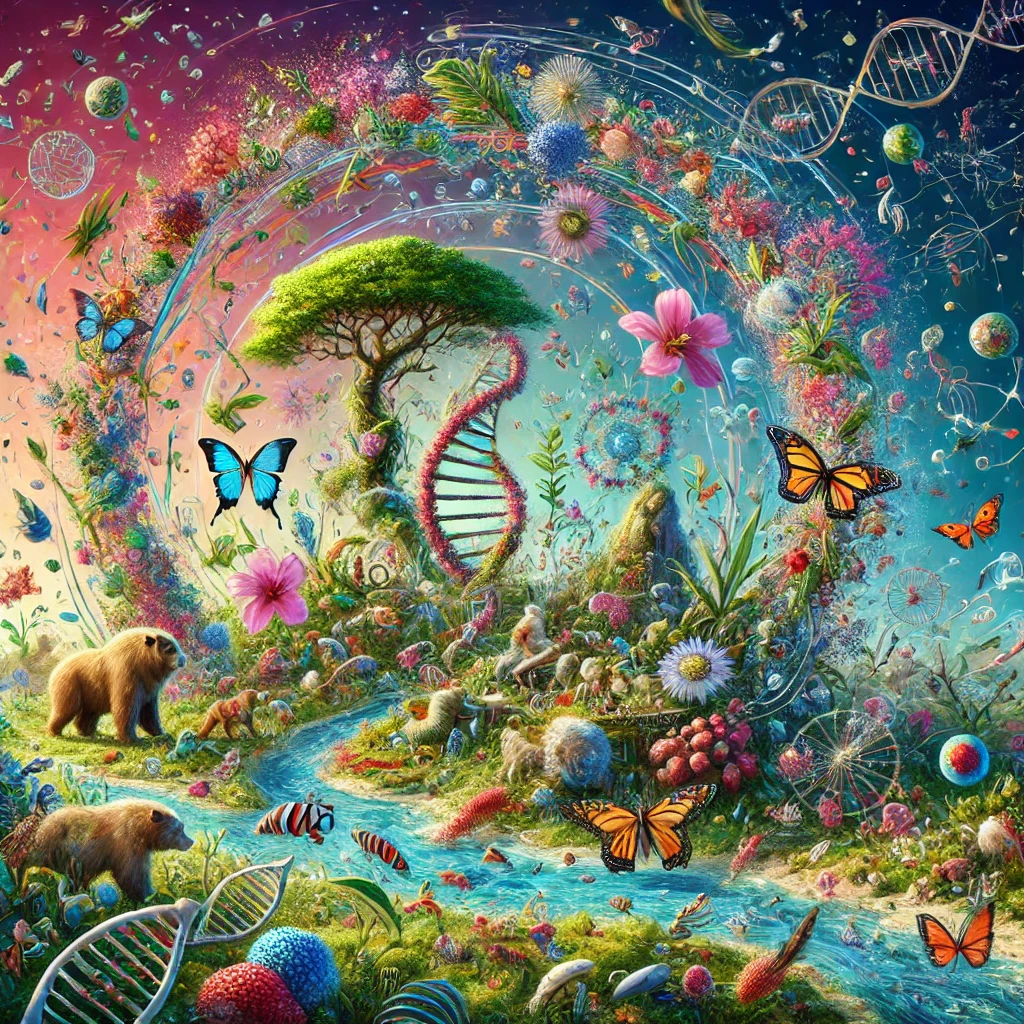
a. Resource Depletion and Entropic Limits
Environmental sustainability is deeply intertwined with entropy, as the depletion of natural resources reflects the entropic dissipation of Earth’s finite resources. Managing entropy in this context involves sustainable practices that minimize waste and preserve ecological balance.
Example: Sustainable agriculture practices aim to reduce resource entropy by optimizing land use, conserving water, and maintaining soil health, ensuring long-term ecological stability.
b. Climate Change and Systemic Entropy
Climate change exemplifies systemic entropy, where the increasing disorder in Earth’s climate systems leads to unpredictable and potentially catastrophic outcomes. Addressing this requires coordinated efforts to mitigate entropic impacts.
Example: International agreements on carbon emissions seek to reduce the entropic impact of greenhouse gases, striving to stabilize climate systems and prevent further environmental degradation.
c. Conservation and Entropic Preservation
Conservation efforts aim to preserve biodiversity and ecological integrity, counteracting the entropic forces that lead to habitat loss and species extinction. These efforts reflect a commitment to maintaining order within natural systems.
Example: Protected wildlife reserves conserve ecosystems, reducing ecological entropy by safeguarding habitats from disruptive human activities.
10. Entropy and Technological Dependence
a. Automation and Systemic Complexity
The increasing reliance on automated systems introduces technological entropy by creating complex interdependencies that can lead to unforeseen disruptions and vulnerabilities.
Example: The integration of automated supply chains enhances efficiency but also increases the potential for systemic failures if key components malfunction, reflecting heightened technological entropy.
b. Information Overload and Digital Entropy
The digital age has led to information overload, where the sheer volume of data generates high informational entropy, making it difficult to discern relevant and accurate information from noise.
Example: Social media platforms inundate users with vast amounts of information, increasing digital entropy and challenging individuals to filter and prioritize meaningful content.
c. Cybersecurity and Entropic Threats
Cybersecurity threats exploit entropic vulnerabilities within digital systems, where disorder and unpredictability can lead to breaches and data loss. Managing these threats involves reducing entropy through robust security measures.
Example: Implementing encryption protocols reduces the entropy of sensitive data, protecting it from unauthorized access and cyberattacks.

Conclusion
Entropy, when viewed as a measure of ignorance and the limits of our knowledge, offers a multifaceted framework for understanding the complexities of the human condition. From the intricacies of individual cognition to the vastness of societal structures and the boundless frontiers of scientific inquiry, entropy encapsulates the uncertainties and challenges that define our existence. It serves as both a reminder of our limitations and a catalyst for innovation, driving us to seek order amidst chaos and to continually push the boundaries of what we can comprehend.
In acknowledging entropy’s pervasive role, we cultivate a philosophical humility that recognizes the vastness of the unknown and the perpetual nature of our quest for understanding. This perspective not only shapes our intellectual pursuits but also influences our ethical considerations, emotional resilience, and societal advancements. Ultimately, entropy as a measure of ignorance underscores the delicate balance between order and disorder, highlighting the dynamic interplay that propels human progress and defines our place within the intricate tapestry of the universe.
